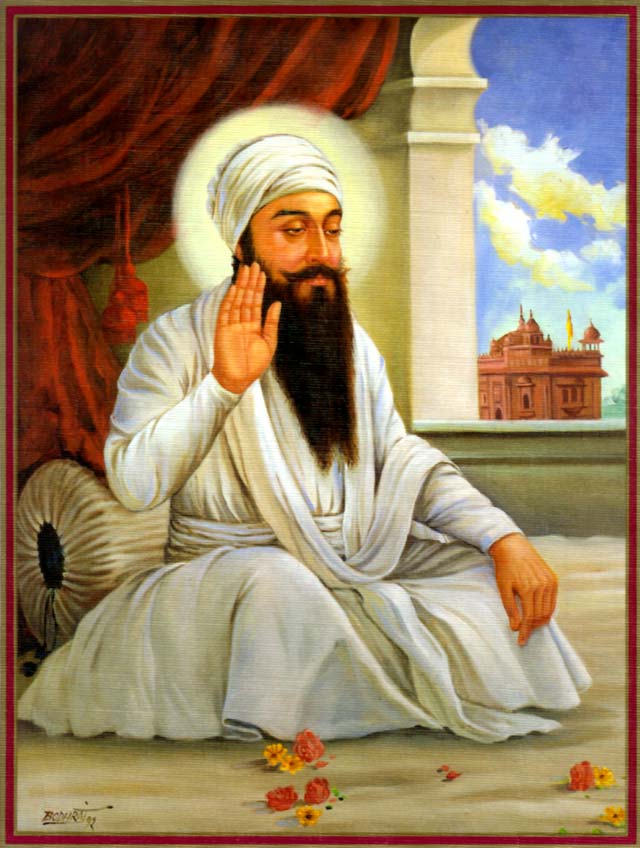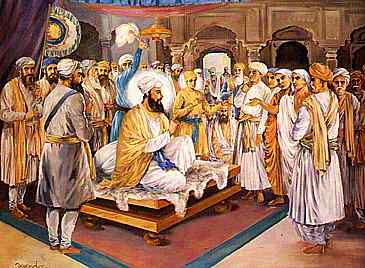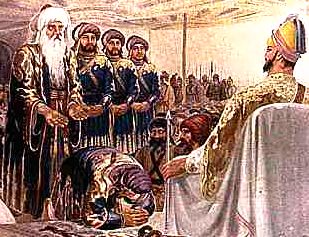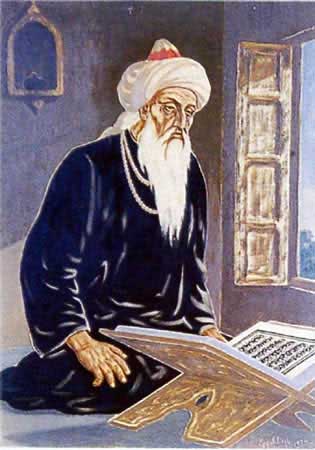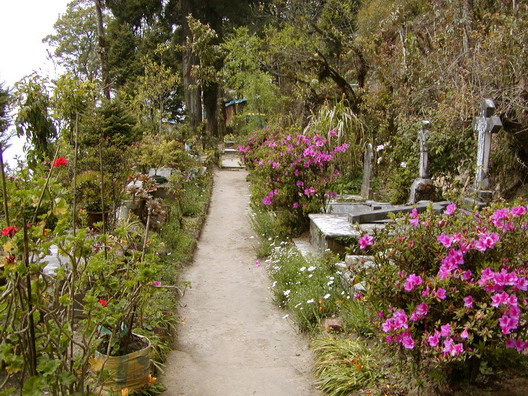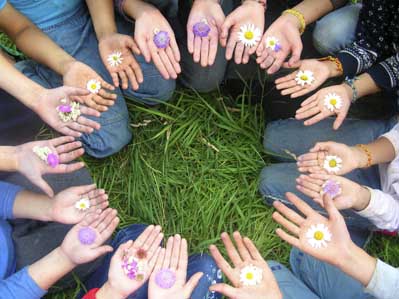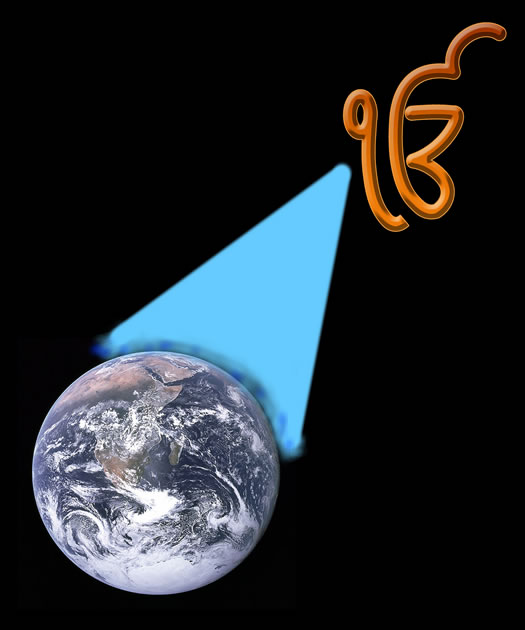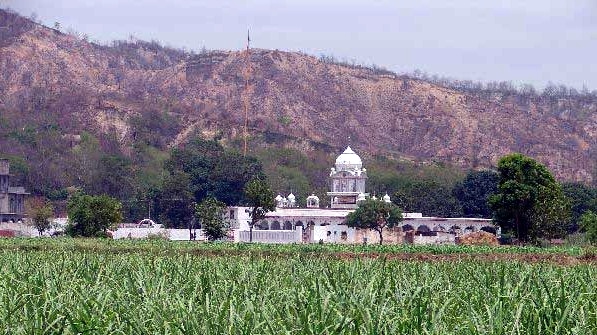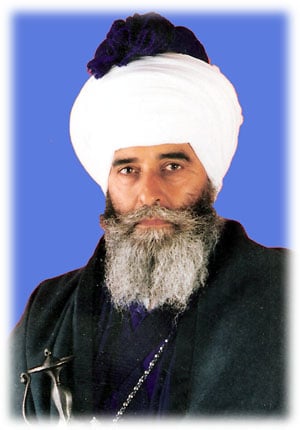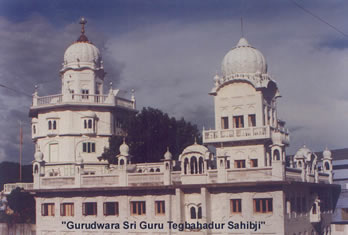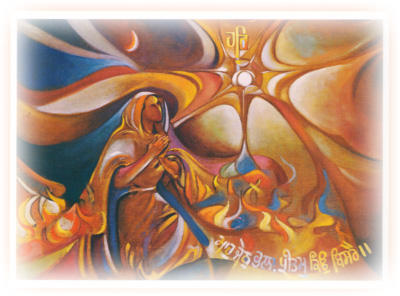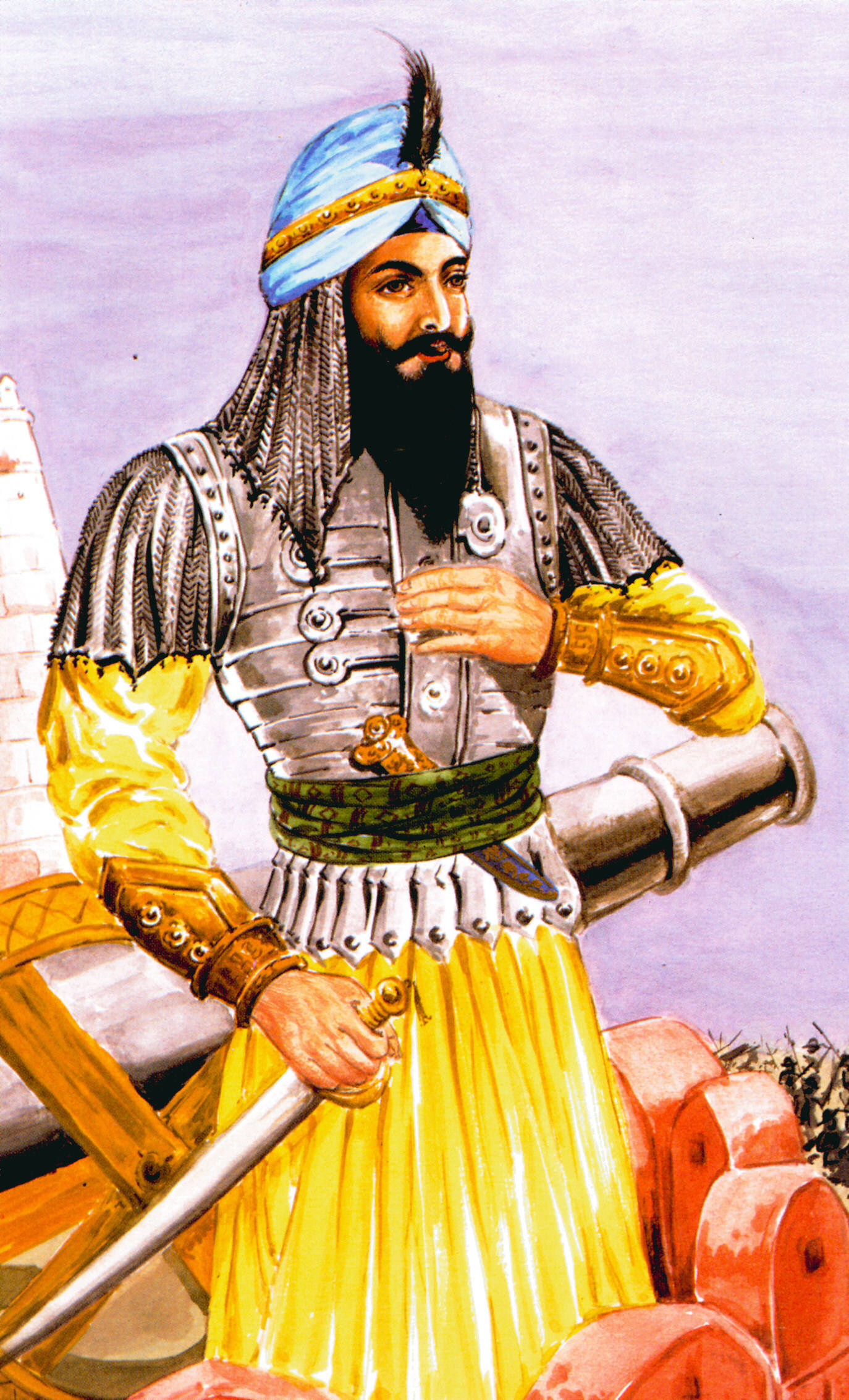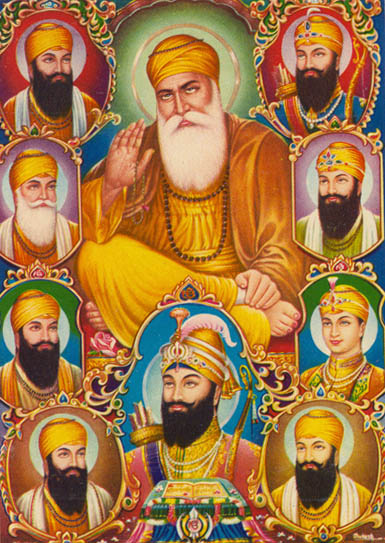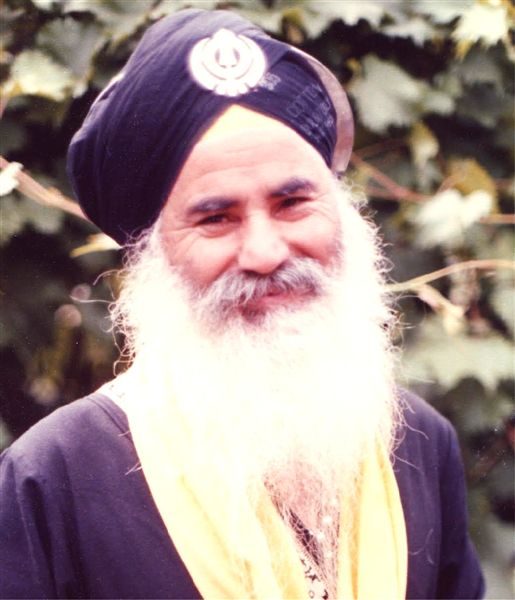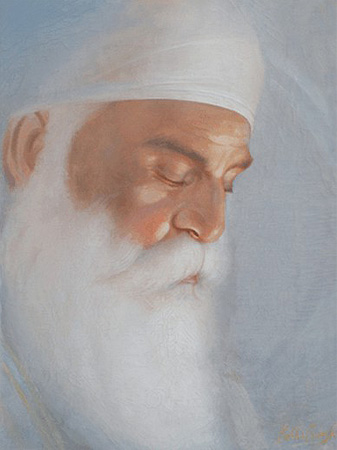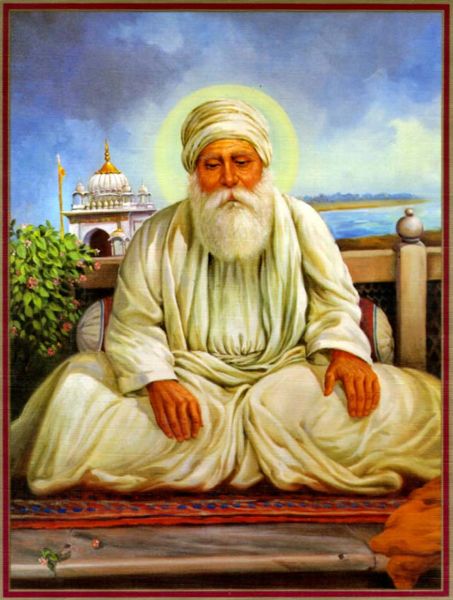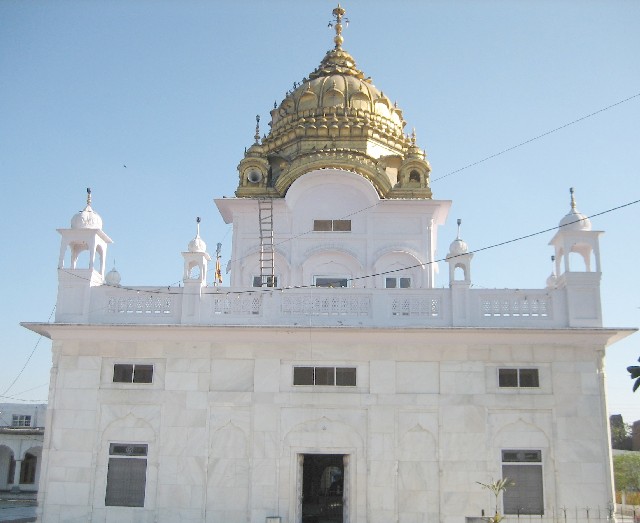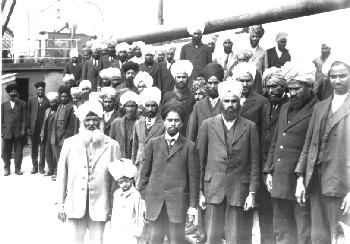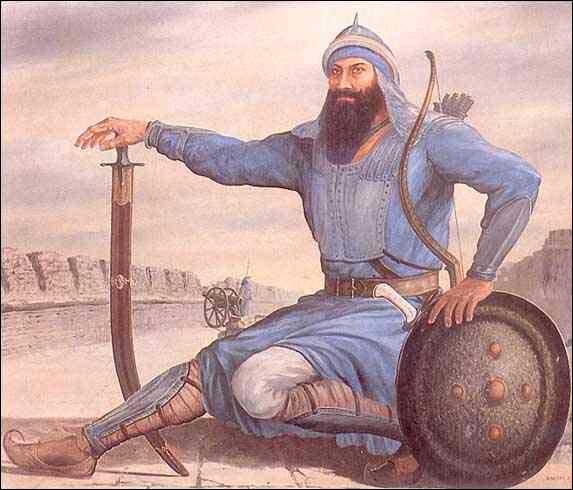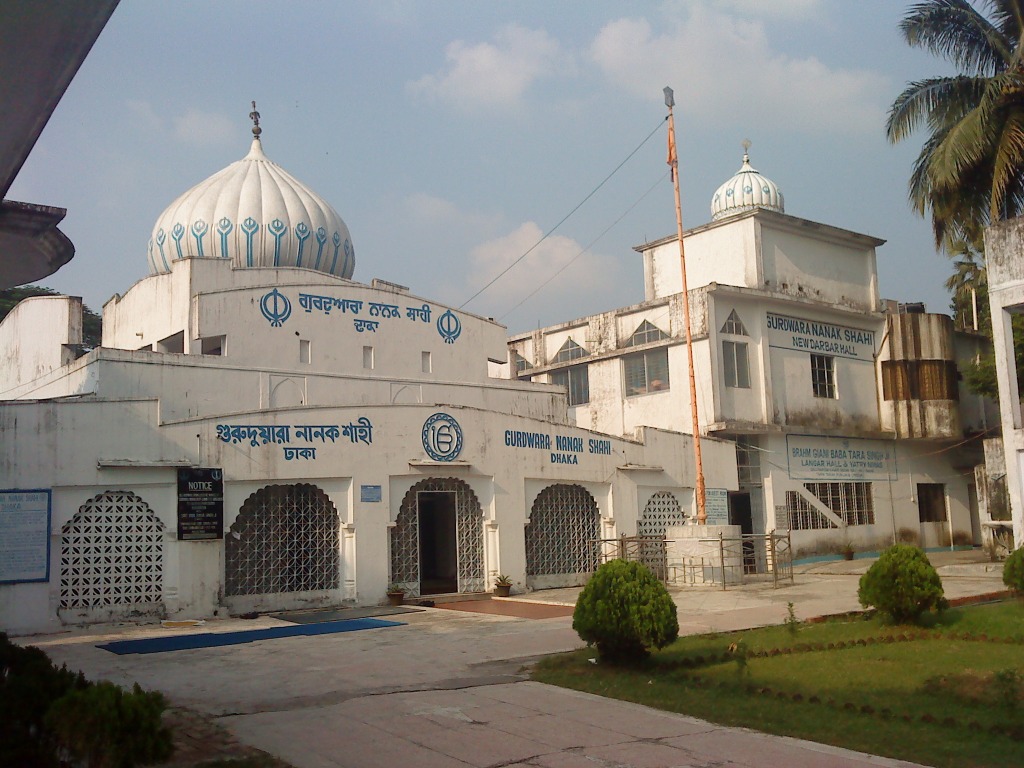SikhiWiki:Today's featured article/May 2009
Today's featured article archive
2007 -
2008 -
2009 -
2010 -
January - February - March - April - May - June - July - August - September - October - November - December
Today is Monday, November 3, 2025; it is now 16:55 UTC
Featured content:
| << | Today's featured articles for May 2009 | >> | ||||
| Su | Mo | Tu | We | Th | Fr | Sa |
| 1 | 2 | |||||
| 3 | 4 | 5 | 6 | 7 | 8 | 9 |
| 10 | 11 | 12 | 13 | 14 | 15 | 16 |
| 17 | 18 | 19 | 20 | 21 | 22 | 23 |
| 24 | 25 | 26 | 27 | 28 | 29 | 30 |
| 31 | ||||||
- May 1
Sikhism does not give the right of divorce to its adherents except in extreme circumstances, and even then since it is not legislated within Sikhism this is decided by Western, Hindu, Muslim or other courts.
The Guru Granth Sahib does not specify a word for 'divorce' and this act is not considered in the holy Granth; apart from the word 'chhutee' (Gurmukhi: ਛੂਟੀ) which means 'released' or 'escaped' no other word is specified for this act of separation. In English we have the word 'divorce'; in Urdu we have 'Talaak'; in Spanish we have 'divorcio', etc.
Many Sikh sources mention the difficulty of divorce in the Sikh tradition; some quotes from Sikhs are as follows:- “In the case of broken marriage, divorce is not possible according to the Sikh religious tradition. The couple can, however, obtain a divorce under the Civil law of the land.”
Anand Karaj (Punjabi: ਅਨੰਦ ਕਾਰਜ, anand kĝraj) is the name given to the Sikh wedding ceremony, literally translated as "Blissful Event". Sikhs regard marriage as a sacred bond of mutual dependence between a man and a woman. .....More
view – talk – edit – history
- May 2
On the 2 May every year, the Sikhs celebrate the birthday of their spiritual master, Guru Arjan Dev, the fifth Guru of the Sikhs. Guru ji was the embodiment of Godly devotion, Selfless Service and Universal Love. He was the treasure of celestial knowledge and spiritual excellence.
He substantially contributed towards the welfare of society and the formation of the Sikh faith. He stood steadfastly for the principles he believed in, even sacrificed his own life, and attained a unique and unparalleled martyrdom in the history of mankind.
Guru Ji was born on May 2, 1563, in the house of Guru Ram Das, the fourth Guru of the Sikhs. He was the youngest of the three sons of the fourth Sikh Guru. Guru Ram Das envisioned heavenly qualities in his youngest son Arjan.
From childhood Guru Ram Das found him imbued with Naam, the remembrance, love and affinity with God and always immersed in tranquil bliss. The Guruship was destined to be bestowed upon Guru Arjan. It is said that one day, baby Arjan crawled up on the Divine throne of his maternal grandfather, Guru Amar Das the third Guru, and sat there comfortably. The Guru smiled and prophesied, “Maternal Grandson will ship the Naam across.”
Although he ascended the throne of Guru Nanak at a young age of 18, he was far more advanced in wisdom and spiritual understanding than his tender age. The letters he wrote to his father from Lahore, not then even a teen-aged boy, stand testimony to this fact (see Shabad Hazaray}. .....More
view – talk – edit – history
- May 3
Shabad Hazaarae is the Bani of longing for the beloved Guru. It was written by Guru Arjan when he was separated from Guru Ram Das, his father for a duration of time.
During that period of separation he sent these three letters to his beloved Guru and Father expressing his longing for the "blessed vision of the Guru".
Reciting this shabad brings union with the your beloved; it expresses in deep terms the true sense, the hurt of separation; the pain endured by the heart when the thought remains focused just on union and nothing else holds any meaning; when everything else loses any interest or meaning. It is an ultimate in the expression of love and longing for the Divine Guru.
| My mind longs for the Blessed Vision of the Guru's Darshan. It cries out like the thirsty song-bird. My thirst is not quenched, and I can find no peace, without the Blessed Vision of the Beloved Saint. (1) |
The fourth part was added by Guru Arjan at the time of the union with Guru Ram Das. .....More
view – talk – edit – history
- May 4
Pandit Kirpa Singh Dutt (d. 1705) was the son of Bhai Aru Ram, a Sarasvat Brahmin of Matan, 65 Km east of Srinagar, in Kashmir. Aru Ram had met Guru Har Rai and sought his blessing at the time of the latter's visit to Kashmir in 1660.
A group of Kashmiri brahmins came to Guru Tegh Bahadar at Anandpur sahib in May 1675 to seek the Guru's protection against atrocities of Aurungzeb. Kirpa Ram led this group of Kashmiri Pandits (educated scholars) driven to dire straits by the State persecution of non-Muslims.
They had faced stiff taxes, atrocities, cruelty and repression under the Mughal governor of Kashmir. Honour of their daughters was being lost and they were losing their religion to the fanatic zeal and proselytization activities of Islamic crusaders.
Iftikhar Khan, governor of Kashmir (1671-1675) was a harsh man and was making forcible conversion to Islam of all non-Muslims. The Kashmiri Brahmins asked the Guru for a solution. Guru replied "Such activities can only be stopped by the sacrifice of a great person".
Just then 8 years old son of Guru Tegh Bahadar, Gobind Rai (later named Gobind Singh) walked into the meeting to find his father lost deep in thoughts. .....More
view – talk – edit – history
- May 5
Peer Buddhu Shah (13 June 1647 - 21 March 1704), a Muslim divine whose real name was Badr ud Din, was an admirer and ally of Guru Gobind Singh.
He was born on 13 June 1647 in a prosperous Sayyid family of Sadhaura, in the present-day Ambala district of Haryana. Because of his simplicity and silent nature during his early childhood he was given the nickname of Buddhu (literally meaning "simpleton") which stuck to him permanently.
He was married at the age of 18 to a pious lady, Nasirari who is better known as Bibi Naseera. She was the sister of Said Khan a high ranking officer in the Mughal army. Peer Buddhu Shah had four sons Sayyed Ashraf, Sayyed Muhomad Shah, Sayyed Muhomad Baksh and Sayyed Shah Hussain.
It is not certain how Buddhu Shah first became acquainted with Guru Gobind Singh, but it is recorded that he called on him in 1685 at Paonta, on the bank of the Yamuna. While Guru Gobind Rai was staying at Paonta, the Pir was touring the hilly areas. The Pir came to know that Guru Gobind Rai, the tenth embodiment in the line of Guru Nanak, was staying at Paonta. .....More
view – talk – edit – history
- May 6
Sheikh Fariduddin ‘Shakar ganj’ (1173 to 1265) popularly known as Baba Farid, or Baba Sheikh Farid Ganj-i-Shakar is regarded as the prime mystic–poet of the Punjabi language.
"Baba Sheikh Farid Ganj-i-Shakar" is not a ‘baptised’ name, but a galaxy of venerable modes of address with which Farid-ud-Din; who used Masud as his pen-name, began to be adored after his death by his devotees.
With Baba Farid a new star blazed on the horizon of greater Punjab. By his mellifluous poetry he conferred an independent status upon Punjabi, especially in his doha format. Baba Farid’s dohas in inspiringly sweet poetry are highly revered and forever enshrined in the Guru Granth Sahib.
Khaliq Ahmad Nizami, Professor of History, Muslim University, Aligarh, in his well documented book, The Life and Times of Slwikh Farid-ud-Din Ganj-i-Shakar (1955) provides comprehensive-information about Shaikh Farid.
Farid-ud-Din’s grandfather was a part of the exodus, of scholars, artisans and of other such careerists who ‘considered it expedient to migrate to Northern India from Kabul when Afghanistan was trampled by hordes of Mughals during the eleventh century. The Mughals were given to mass plunder, carnage and arson leading to vandalism. .....More
view – talk – edit – history
- May 7
Village of Children Something about the village graveyard set it apart. During my travels I had seen literally hundreds of graveyards. Usually graveyards are somber and somewhat resigned under the weight of death. But this one was different: besides been well-kept - which in itself was not unusual - it was designed more like a garden of life than a cradle of death.
What set it truly apart was the cheerfulness of its structure. Its' shady trees and sunny flowers seductively invited me in. Graveyards were my favourite resting places. It seemed that as soon as one exited a womb, Maya (worldy attractions) became a human's sole companion until the gates of a graveyard. Perhaps it was the absence of Maya in such places that kept my hopes of enlightenment alive.
I had left home when I had turned twenty. Although I didn't know it then, I had set out to find a place free of illusions. I had travelled to majestic temples, sober ashrams, holy rivers, renowned sadhus and any other religious place I had been told about, yet my mind was as restless as it was when I had first started. The holy places and the holy people at these places were among the most devout followers of Maya. .....More
view – talk – edit – history
- May 8
In a life that is busy and prone to many difficulties, much pain and riddled with many personal challenges it seems impossible to worry about others. One has to worry about oneself; there is debt to pay off; outstanding bills that need to be paid urgently.
What happens if you suffer health problems; how will you cope? How are you going to balance your budget? What if the interest rate goes up again? There are so many hurdles that need to be crossed to get to a level playing field; will I ever get there?
In a recent survey, over 50% of Americans said they worry about the money they owe; many said that they worry about their overall debts most of the time. These debts can come from home and car loans as well as credit cards; 75% in the poll said they have credit cards; 40% of those with credit cards said they will use plastic to help pay for their holiday spending that year. Debt and money problems are highlighted in many surveys across the world.
With so much personal stress and pressure, the idea of helping others is difficult to accept. However, Gurbani warns us, "O Nanak, how shall I tell them this? Without the karma of good deeds, they are only destroying themselves (1)" (SGGS p 147). The wise Guru tells us that without doing good deeds we are digging a large hole for ourselves.
Gurbani reminds us that it is only the good deeds and actions that will remain with us and will be counted in the end; the pleasures and enjoyments of life here on Earth will mean nothing. .....More
view – talk – edit – history
- May 9
The word Sikh means "student" or "disciple" in the Punjabi language. Sikhs are students and followers of Guru Nanak (born 1469), the founder of the Sikh tradition. Guru Nanak was succeeded by nine Gurus or holy teachers.
Since 1708, the Sikh Guru has been their religious scripture, the Guru Granth Sahib. Sikhism is the youngest of the world's major religions, being founded in the 15th Century. (Guru Nanak, their first 'spiritual teacher' or Guru was born in 1469)
There are over 23 million Sikhs worldwide, making Sikhism the fifth largest organized religion in the world. There are about 800,000 Sikhs in the United Kingdom and about 1,200,000 Sikhs in North America. Almost 18 million Sikhs live in the Punjab district in what is now India and Pakistan.
Sikhism teaches that there is one God, all people are equal and good actions are important for a Sikh. Sikhs also believe in honesty, truthfulness, charity, and the constant remembrance of God. They consider that empty religious ceremonies have no real meaning in life. Consequently they avoid pilgrimages, fasting and statue worship. .....More
view – talk – edit – history
- May 10
The history of the Sikhs in East Africa begins with the building of the railways in about 1890. The pioneers who were brought over from India to build the old Uganda Railways were skilled workmen - carpenters, blacksmiths and masons. They were quick to adept to the specialised requirements of their new surroundings and many became fitters, turners and boiler-makers.
These early Sikhs were soon joined by their educated brothers. Eventually, there was no department within the pioneering Railway industry without Sikhs. A number of policemen, ranging from inspectors to constables, were also sent from India to become the vital instrument of maintaining law and order. They remained in the country for several years.
Many, but not all, of the original Sikh pioneers returned to India to be replaced and augmented by others who came of their own choice. Their skills and industry were always in great demand. As Sikhs began to settle in their adopted country a sense of community was imbued by the building of Gurdwaras in all areas of the country where there was a significant number of Sikhs. .....More
view – talk – edit – history
- May 11
Originality and clarity of the Sikh faith was instrumental in promoting it from its inception in about 1499 and the voluntary adoption by the masses with eagerness and whole-heartedness.
Equality, non-discrimination, true justice, and worship of only One God, are basic values that are well-known and gave the world a simple and universal faith.
Today, some 540 years after the birth of the founder of Sikhi, Guru Nanak, it has more than twenty two million followers, and is the fifth largest faith in the world.
Sikhi is respected world over and is known as a religion of peace and unity of mankind. The Sikhs have only fought wars to defend themselves or others but are probably the only section of society that have never fought wars as aggressors.
For the Gurus promoted all human beings as one and the same, and they are all above discrimination. The Gurus showed real love for all of humanity. Muslims were equally dear to them as Hindus, or any others. It is well known that Bhai Mardana a Muslim, spent his whole adult life with Guru Nanak, accompanying Guru with his Rabab as a musician and the Guru's closest companion everywhere that the Guru went. .....More
view – talk – edit – history
- May 12
Gurdwara Toka Sahib is a wonderful gurdwara which has been established in honour of Guru Gobind Singh, who stayed here for a few days in 1685 and again in 1688.
This Gurdwara Sahib is situated in the peaceful area of village Toka in Sirmaur district of Himachal Pradesh, at the border of Himachal Pradesh and Haryana in India.
The following story has been recorded about this holy shrine: The majority of residents of village Toka were ‘Rangharhs’ or thieves. They got an opportunity to enter the camp of Guru Gobind Rai’s army and steal two camels.
When the Sikh soldiers failed to find the two camels, they informed Guru Gobind Rai. The Guru called the ‘Rangharhs’ of the village and enquired about the camels. The ‘Rangharhs’ said they did not take any camel. They said, “Other thieves must have stolen your camels. We have not seen your camels”. They then went back to their village. There was (and still is) another village, named ‘Laaha’ at some distance from village Toka. Majority of its residents were poor people. The Guru called them to his camp and asked them if they would go to the Rangharhs’ village disguised as beggars to check if the Guru's camels were in the village. .....More
view – talk – edit – history
- May 13
Tarna Dal, the army of the youth, was one of the two main divisions of Dal Khalsa, the confederated army of the Sikhs during the eighteenth century, the other one being the Buddha Dal (army of the elders).
These Dals came into existence in 1734 when, during a truce with Zakariya Khan, the Mughal governor of the Punjab, different roving bands of the Sikhs were concentrated in Amritsar.
The Tarna Dal was subdivided into five Jathas or fighting groups of approximately 1300 to 2,000 men each, mostly mounted. The first was commanded by Baba Deep Singh.
Commonly known, after he met with a martyr's death, the Jatha began to be called the Shahidanwala Jatha (meaning: group of the martyrs).
The second, commanded by Bhai Karam Singh and Dharam Singh of Amritsar, came to be known as Amritsarian da Jatha (meaning: group of the Amritsarias). .....More
view – talk – edit – history
- May 14
Gurdwara Sri Guru Tegh Bahadur Sahib - This famous Gurudwara is situated in the heart of the Dhubri town on the bank of the mighty Brahmaputra river in far north-east India.
Guru Nanak the first Sikh Guru visited this place in 1505 and met Srimanta Sankardeva (the founder of the Mahapuruxiya Dharma) as the Guru travelled from Dhaka to Assam.
This historic shrine, Sri Gurdwara Guru Tegh Bahadur or Damdama Sahib at Dhubri in Assam was built in memory of the visit of Guru Nanak. Hence it has great importance for Sikh community. Guru Tegh Bahadur established this Gurdwara during his 17th century visit to the area.
Sikh devotees from all over India and the world assemble in this Gurdwara every year in the month of December to mark the martyrdom of Guru Tegh Bahadur with due solemnity and ceremony. Sikh devotees call this festival Sahidee Guru Parav. .....More
view – talk – edit – history
- May 15
Jeth/Jayth is a third month in the Sikh Calendar, the Nanakshahi calendar. This month coincides with May/June of the Western/Georgian/Julian Calendar and is the month after the harvest festival in Punjab. This year the first day of this month falls on the 15 May. The month is 31 days long; it starts on May 15 and ends on June 14.
Next month on June 15, begins the fourth month in the Sikh Calendar called Harh. During this month, in Punjab, the land of the Sikh Gurus, the season is the beginning of summer and the climate is beginning to get hot. Most tourist wills want to begin to leave this area towards the end of the month as it starts becoming quite hot.
The Guru tells us that in the month of Jeth (May/June): ".... the bride longs to meet with the Lord. All bow in humility before Him. One who has grasped the hem of the robe of the Lord, the True Friend - no one can keep him in bondage. God's Name is the Jewel, the Pearl. It cannot be stolen or taken away. In the Lord are all pleasures which please the mind. As the Lord wishes, so He acts, and so His creatures act. They alone are called blessed, whom God has made His Own. If people could meet the Lord by their own efforts, why would they be crying out in the pain of separation? Meeting Him in the Saadh Sangat, the Company of the Holy, O Nanak, celestial bliss is enjoyed. In the month of Jayt'h, the playful Husband Lord meets her, upon whose forehead such good destiny is recorded. ||4||" (SGGS page 134) .....More
view – talk – edit – history
- May 16
During the times of Sher-e-Panjab, Maharaja Ranjit Singh, the Sikh Raaj (kingdom) stretched from the River Sutlej to Kabul (in Afghanistan). His key general was Sardar Hari Singh Nalwa, who was a Rehatvan (strictly observant) Sikh of the Guru.
Once, when Hari Singh Nalwa had set up camp with his army in Jamrud, in Afghanistan, a local Muslim woman called 'Bano' happened to watch the Sikhs set up camp. She found Hari Singh Nalwa very handsome and attractive, and had decided that he would be a good match and a fine man by which to have a son.
One day, Bano came to see Hari Singh Nalwa. He was sitting in his tent, when his guards told him that, there was a local woman who wished to see him. Not knowing who this lady was or what she wanted, Hari Singh gave permission for her to come in and see him. Bano said, "I have heard of the Sikhs. You are remarkable people. I have been watching you from a distance. I am not married and I have no children, but I desire to have a son who is like you."
Hari Singh, not understanding the motivation or intention of Bano, said, "May Waheguru bless you that you may have a son with the qualities of a Sikh." Bano irritably said, "I want to have a son with you Sardar Ji." .....More
view – talk – edit – history
- May 17
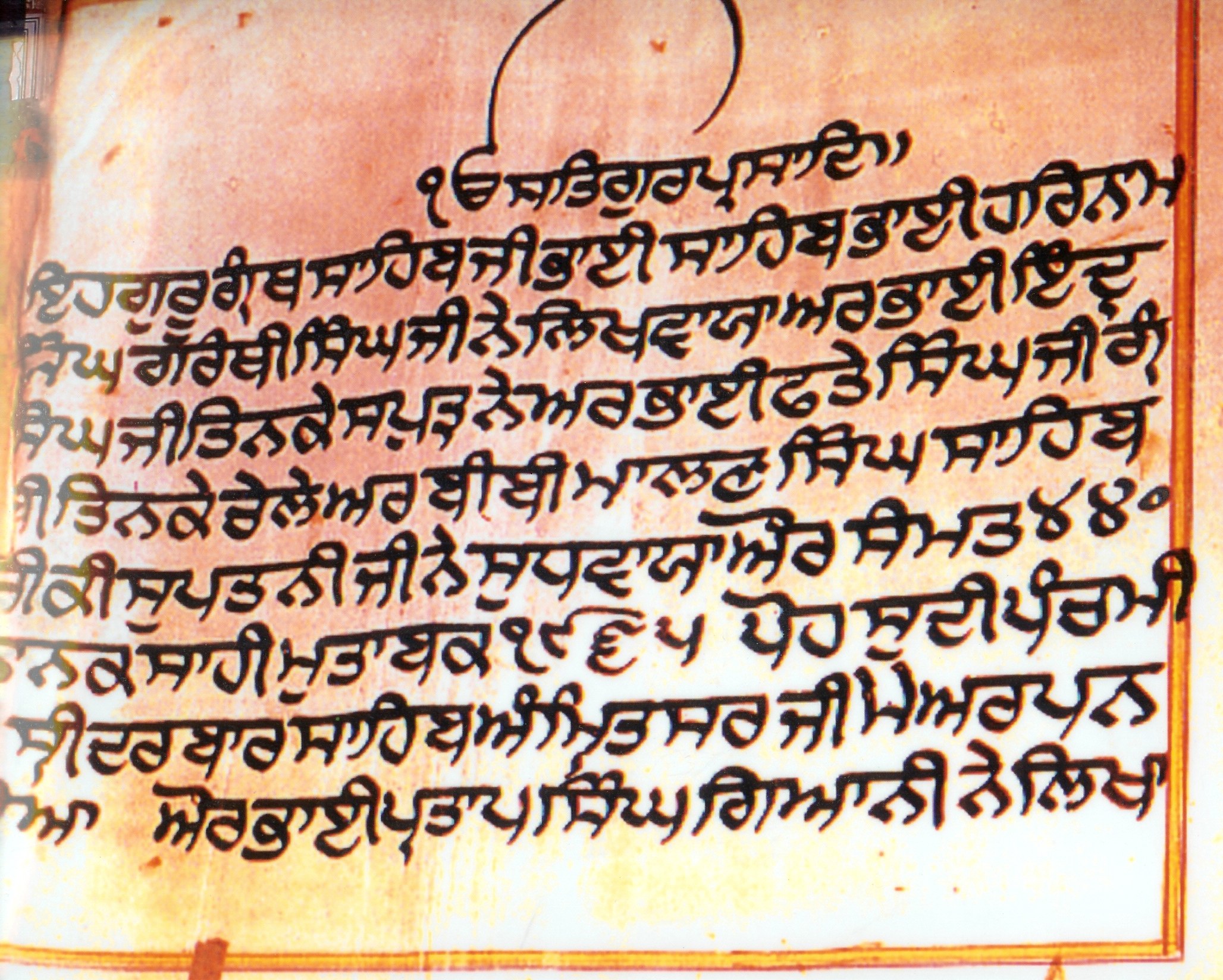
The Sikh scriptures are unique among the religious "Holy Books" of the world in that they don't just offer spiritual guidance for the Sikhs alone but impart guidance and assistance for all the peoples and religions of the world.
The Siri Guru Granth is a supreme treasure for all mankind. It is the true and permanent spiritual guide of the Sikhs. Guru Granth Sahib transcends creed and caste, cant and convention. It does not belong to the Sikhs alone. It consecrates the sayings of 11 Hindu bhagats and as many bard poets and seven Muslim saints, along with the teachings of six Sikh gurus.
No other religion has included in its holy book the sayings of others, however revered. The Guru Granth Sahib provides unique and unequalled guidance and advice to the whole of the human race. It is the torch that will lead humanity out of Kaljug, (the dark era) to a life in peace, tranquillity and spiritual enlightenment for all the nations of the world.
This is what Bertrand Russell said "....that if some lucky men survive the onslaught of the third world war of atomic and hydrogen bombs, then the Sikh religion will be the only means of guiding them." Russell was asked that he was talking about the third world war, but isn't this religion capable of guiding mankind before the third world war? In reply, Russell said, "Yes, it has the capability, but the Sikhs have not brought out in the broad daylight, the splendid doctrines of this religion which has come into existence for the benefit of the entire mankind. This is their greatest sin and the Sikhs cannot be freed of it." .....More
view – talk – edit – history
- May 18
| ਜਬ ਹਮ ਹੋਤੇ ਤਬ ਤੂ ਨਾਹੀ ਅਬ ਤੂਹੀ ਮੈ ਨਾਹੀ ॥ |
| Jab ham hoṯe ṯab ṯū nĝhī ab ṯūhī mai nĝhī. |
| When there is me, God is not there. Now there's only you, Ego has vanished! |
When there is ego, there is no God; when there is God, there is no ego!
If one needs to be near God, then one has to remove one's ego. Ego is a barrier to the path that leads to the Lord.
Ego which in Punjabi is referred to as Ahankar represents the feeling of excessive pride or acute self-importance.
An individual may feel excessively proud due to many things - due to one's enormous number of worldly possessions, one's outstanding beauty or attractive physical appearance, personal talents, material wealth, mental intelligence, superior spirituality, authoritative powers, great charity work, etc.
Sikhism requires one to shed this internal evil. Sikhs believe that this negative trait can be subdued by engaging in community service and by meditation or engaging in simran. Engaging in community work reduces the feeling of self-importance and brings respect for the community spirit.
The tradition of free selfless service for society and the community with Nimrata or humility is well established in Sikhi. .....More
view – talk – edit – history
- May 19
Sikhism was established by ten Gurus, human spiritual teachers or masters, over the period from 1469 to 1708 - that is over a period of 239 years. These teachers were enlightened souls whose main purpose in life was the spiritual and moral well-being of the masses.
By setting an exceptional example of how to live a holy and worthy life through practising righteous principles of living their human lives, they sort to awaken the higher conciousness in the human race. The Gurus taught the people of India and beyond, to live spiritually fulfilling lives with dignity, freedom and honour.
Each of the ten masters added to and reinforced the message taught by the previous, resulting eventually to the creation of the religion that is now called Sikhism. Guru Nanak Dev was the first Guru and Guru Gobind Singh the final Guru in human form. When Guru Gobind Singh left this physical world, he made the Sri Guru Granth Sahib the ultimate and final Sikh Guru. The Spirit of this final Guru is more than a holy book for the Sikhs, who give this eternal Guru the same respect and reverence as a living "human" Guru.
During the span of 239 years from 1469 to 1708, the Sikh Gurus laid down within the sacred scriptures, the rules and regulations that outline the way of living that was to be followed by all practising disciple of this religion. The history and the literature present the followers of the faith with the raw material required to learn about the beliefs and practises propagated by the Gurus.
The Gurus were clear also to outline rituals, practises and beliefs that were not appropriate and were not to be followed by the faithful disciples. Perhaps, Sikhi is unique among world religions in that it has ten masters who created and were responsible for the birth of the faith while most others religions just had one master, prophets or leader? .....More
view – talk – edit – history
- May 20
One evening, we had just finished doing kirtan at Gurdwara Singh Sabha, Slough. A Singh phoned and said he had booked kirtan in Hounslow, and we should come straight away. Bhai sahib said, "Lets go quickly, we should always be on time".
As Bhai Jeevan Singh sahib, his singhni (wife), myself and another youth walked downstairs into the joorian (shoes) section. A mona (man with hair cut) was walking in to the Gurdwara. Accidentally, he bumped into Bhai sahib. He said "sorry," and looked in to Bhai sahib's face. Those who know Bhai sahib know how enigmatic his smile is, and how his face always shone.
Bhai sahib said to him, "I came here especially to see you, I have something for you." Bhai sahib then took off his dastaar (turban) and handed it to the youth. The mona youth could not believe his eyes; Bhai sahib said these words to him with so much honesty, pyaar (lovingness) and humility. From that day on, that once "mona" Sikh kept his kesh and came into Sikhi.....
When Professor Manjit Singh was the Jathedar {leader) of the Akal Takhat Sahib. He called a World Sikh Smagam (gathering, conference), which is basically a gathering of "Sarbat khalsa". Every Gurdwara, Sikh group and jatha from around the world were invited and many days were spent discussing Panthik (concerning the Sikh path or Panth) issues at the Siri Akal Takht Sahib. All Panthik matters were discussed. Thousands of Sikhs gathered, including all the luminaries of the Panth. .....More
view – talk – edit – history
- May 21
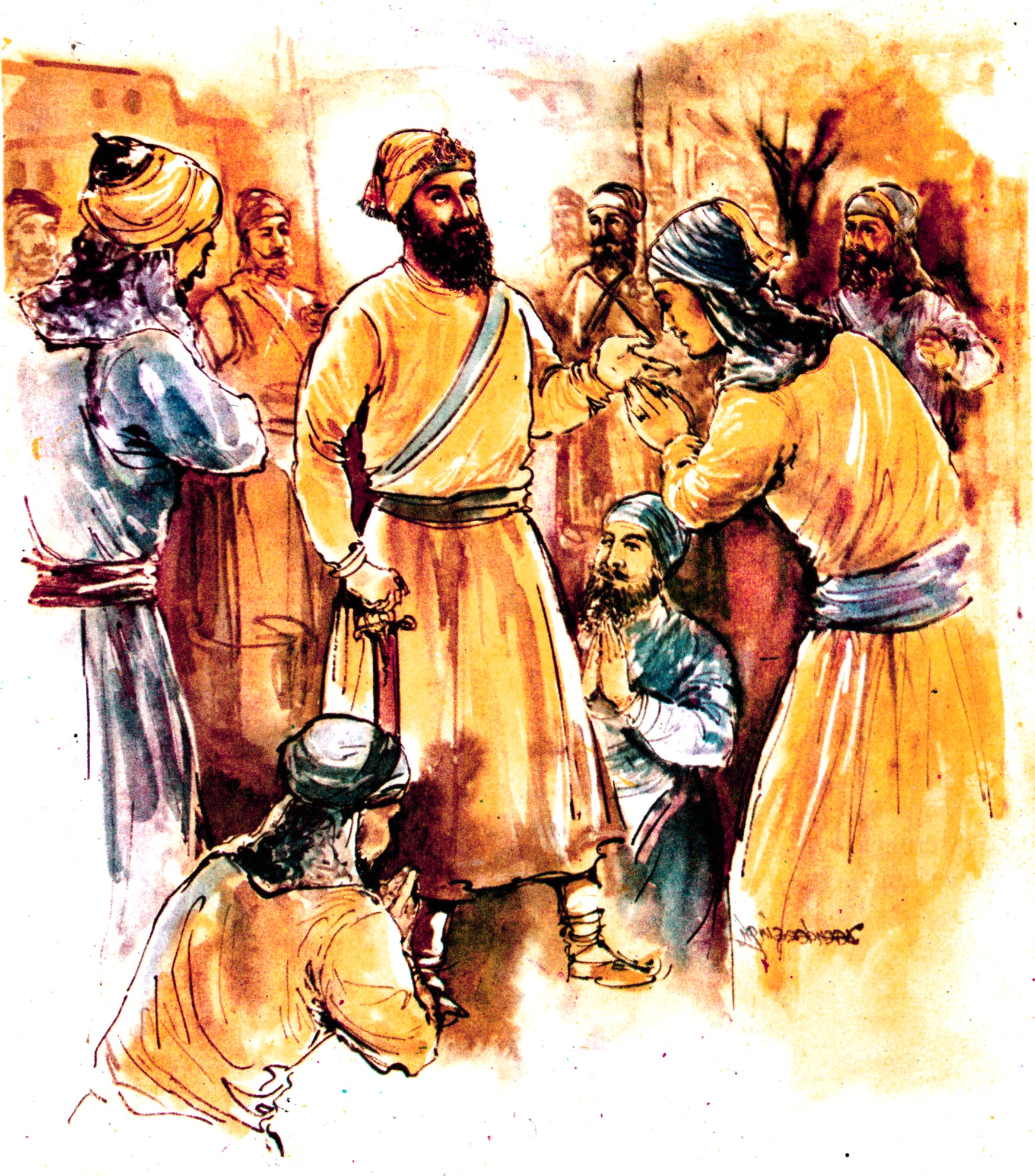
Sahibzada Ajit Singh (11 February 1687 - 7 December 1705), the eldest of four sons of Guru Gobind Singh, was born to Mata Jito ji (also known as Mata Sundari ji) at Paonta sahib on 11 February 1687. The following year, Guru Gobind Singh returned with the family to Anandpur sahib where Ajit Singh was brought up in the approved Sikh style.
He was taught the religious texts, philosophy and history, and had training in the martial arts such as riding, swordsmanship, gatka and archery. He grew up to be a handsome young man, strong, intelligent and a natural leader of people. Soon after the creation of the Khalsa on 30 March 1699, he had his first test of skill. A group of Sikhs (sangat) coming from Pothohar, northwest Punjab, was attacked and looted on the way by the Ranghars of Nuh, a short distance from Anandpur across the River Sutlej.
Guru Gobind Singh sent Sahibzada Ajit Singh, barely 12 years of age then, to that village to intervene, defend the sangat and deal with the intruders. Ajit Singh at the head of 100 Sikhs reached there on 23 May 1699, punished the Ranghars and recovered the looted property. .....More
view – talk – edit – history
- May 22
In one of his compositions Guru Nanak said, “As long as we are in this world, we should listen to others and say something to them”. This is the basic principle of dialogue, of exchange of opinions or ideas.
During his four lengthy journeys to the east, south, north and west, he opened a dialogue with all the existing faiths, not in today’s empirical or utilitarian language, but in ethical and spiritual language capable of expressing human realities and spiritual values.
He filled the inter-religious space with love, ethical humanism and spirituality. He approached every religion as his own and presented his own faith and philosophy as everyone’s religion, in the crucible of eternal Truth.
He travelled to various centres of religious pilgrimage. His dialogue with pandits, sadhus and yogis of every sect, as with mullas, pirs and kazis continued throughout his life. He visited the places of pilgrimage of Kurukshetra, Mathura, Haridwar, Benaras, Gaya as well as those in Bengal, Assam and Sri Lanka. .....More
view – talk – edit – history
- May 23
Guru Amar Das (Gurmukhi: ਗੁਰੂ ਅਮਰ ਦਾਸ) (Sunday 23 May 1479 - Thursday 16 September 1574) was the third of the Ten Gurus of Sikhism and became Guru on 16 April 1552 at the age of 73 following in the footsteps of Sri Guru Angad Dev Sahib Ji, who left for his heavenly abode on 29 March 1552 aged 48. Guru Amar Das ji was 73 years old when he became the Sikh Guru.
Guru Ji was the eldest son of Sri Tej Bhan Ji a farmer and trader and Mata Lachmi Ji, his devoted mother. He was a shopkeeper and lived in a village called Basarke which is near Amritsar. The third Sikh Guru was married to Mata Mansa Devi and they had four children - Two sons named Bhai Mohan and Bhai Mohri and two daughters named Bibi Dani Ji and younger daughter named Bibi Bhani Ji. Bibi Bhani later married Bhai Jetha who became the fourth Sikh Guru, Guru Ram Das. See article Platforms of Jetha.
The Third Sikh Guru contributed the following to the people of the world:
- Guru sahib instigated the system of "First Pangat then Sangat"
- Further abolished the Caste System. .....More
- May 24
Gurdwara Dera Baba Nanak is situated in the city Dera Baba Nanak which is located in Gurdaspur District of Punjab, India. It is about 1 kms from the Indo-Pakistan border and on the east bank of River Ravi. To its west is located the town of Kartarpur (Ravi) which is located in Pakistan.
As its name implies, this shrine is connected with Guru Nanak, the founder of Sikhi. The Guru used to meditate on God by the well called "Ajita Randhawa da khooh" after his first udasi in 1506. On the stage situated in the Gurdwara sahib, Guru Ji had discussion with Ajita Randhawa.
Guru Nanak, the first master, spent the last days of his temporal life at Gurudwara Dera Baba Nanak. The exact location of Gurdwara Dera Baba Nanak is on the left (or east) bank of Ravi River adjacent to the present-day Indo-Pak border. Guru Nanak Dev used to visit this site for meditation.
On the right (or west) bank of river Ravi Guru Nanak Dev founded the city of Kartarpur. At the age of seventy, Guru Nanak Dev Ji left for his heavenly abode from here. The Gurdwara marking the location of the Guru's heavenly departure is in the territory of Pakistan. However, you can see it standing ashore the East bank of River Ravi or from the town Dera Baba Nanak at a distance of about 4 or 5 Kms across the border line. .....More
view – talk – edit – history
- May 25
The Komagata Maru was a Japanese steam liner, that was chartered by an affluent businessman, Gurdit Singh, to bring Indian immigrants to Canada in 1914.
It began its journey from Hong Kong, sailed to Shanghai, China, then to Yokohama, Japan, and then on to Vancouver, British Columbia Canada where it arrived in Burrard Inlet, near Vancouver, on May 23. This journey took place in 1914, carrying 376 passengers from Punjab, India.
During the period before 1920's the whole of North America has a policy of discrimination against coloured races which was thinly disguised to appear as something else. The dominate white governments of USA and Canada were determined not to allow the flow of Asians, whether so called 'yellow', 'brown' or 'black' immigrants. In the year 1900 the census reported 2050 people from India on the North American continent.
The majority of these Indians were Punjabis who had settled in Canada in the hope of finding work so that they could improve their economic situation from what it had been in the Punjab. .....More
view – talk – edit – history
- May 26
Guru Nanak (1469-1539) promulgated a unique and universal philosophy of humanism in the Indian sub-continent as the renaissance was taking place in Europe (14th to 16th centuries) and scientists were challenging illogical religious concepts and beliefs.
The Guru carried his message far and wide to South Asia and the Middle East. He held discussions with religious leaders: Hindus—(Brahmans, Sidhs and Jogis), Muslims—(Sufis, mullahs and Qazis), Jains and Buddhists in India, the Middle East, Tibet and Ceylon (Sri Lanka), etc
During his travels (odysseys, Udasis) Guru Nanak challenged the ancient mythology, wrong religious concepts and rituals with which the peoples of South Asia and Middle East were shackled for centuries. People were unable to express their freewill in any aspect of their lives because their lives were controlled by their religious and political authorities.
Guru Nanak launched his movement to liberate the masses form ignorance and religious and political tyranny. His philosophy, termed as ”Nanakian Philosophy‘, is embodied in his Bani (Word), which has been incorporated in the Aad Guru Granth Sahib (AGGS). .....More
view – talk – edit – history
- May 27
Sirhind the town located in Punjab India, which was the unfortunate witness to the the martyrdom of the two younger sons or chotta sahibzada of Guru Gobind Singh in 1704. Wazir Khan, the Governor of Sirhind, had vowed to finish off the Sikhs root and branch.
The two younger sons of Guru Gobind Singh, Baba Zorawar Singh who was age 9 years and Baba Fateh Singh who was aged 6 years, were bricked alive on Wazir Khan's orders when the sahibzade had refused to embrace Islam in 1704 at this unfortunate city. The Sikhs were keen to avenge the killings of such young lives by such a evil tyrant and an oppressor of the people of India. Thankfully, some 6 years later, on May 27, 1710, Banda Singh Bahadur announced to the city of Sirhind the end of the tyrannical Mughal rule.
It was 2 years earlier, in 1708, that a chance meeting took place between Lachman Das, later known as Banda Singh Bahadar and Guru Gobind Singh, on the banks of the Godavari River. The Guru sent Banda Bahadur to Punjab to suppress the tyranny of the then rulers and punish Wazir Khan. In October, 1708, Banda set off from Nanded towards Punjab along with a band of 5 Sikhs and a hukamnama, which enjoined upon the Sikhs to assemble under his banner. As Banda reached Delhi, thousands had gathered under his command. .....More
view – talk – edit – history
- May 28
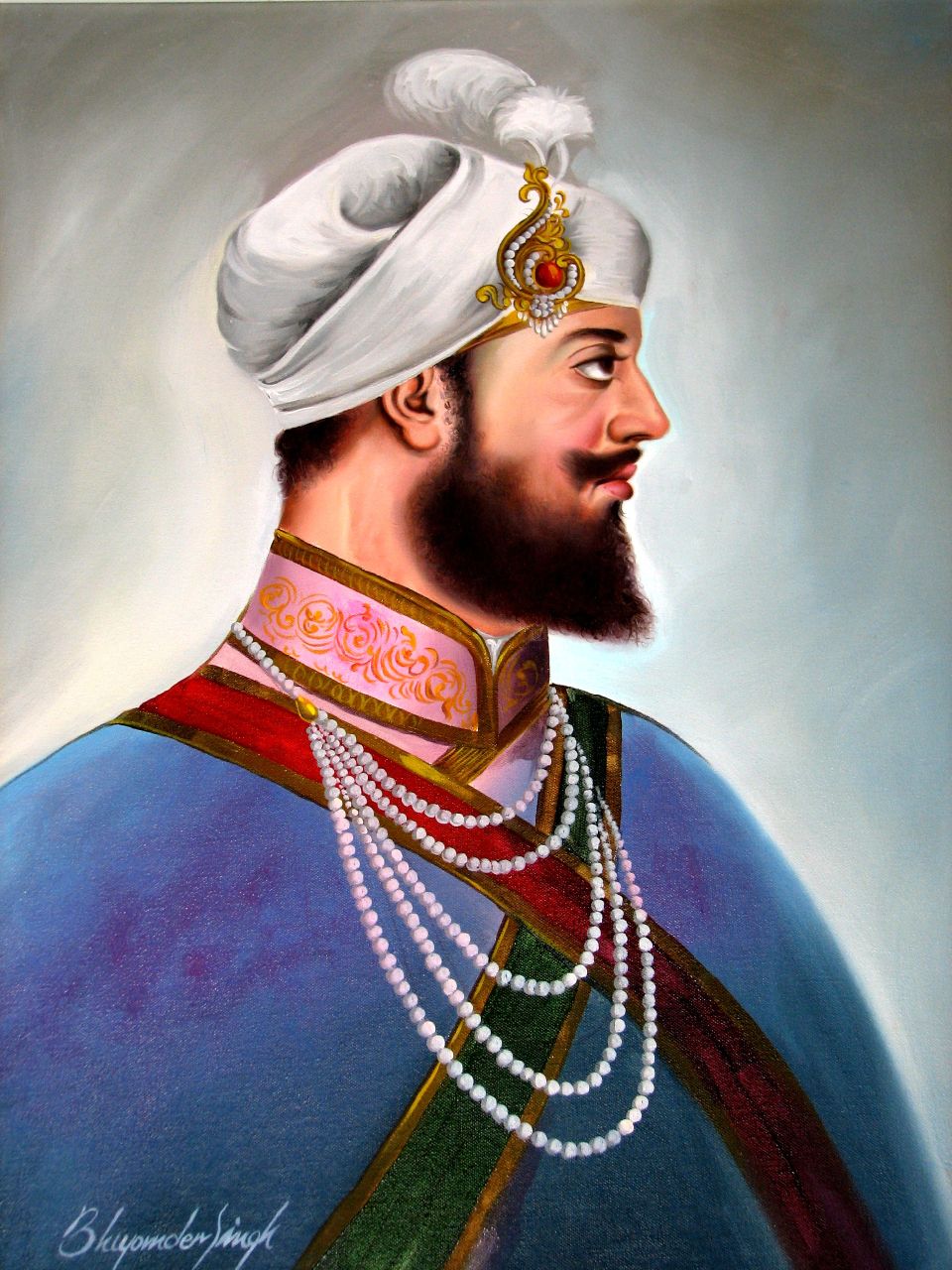
For many years now, the Sikh community worldwide has honoured the sixth Guru's vision of Miri and Piri, celebrating this vision on 21 July every year by calling this day, Miri Piri Divas.
Miri: This word has been derived from the Persian word - “miri”, which itself comes from the Arabic “amir” which literary means commander, governor, lord, prince, etc, and signifies temporal power, "political" or "material" power.
Piri: This word has also been derived from the Persian word - “pir” literary meaning saint, holy man, spiritual guide, senior person, head of a religious order and stands for spiritual power or moral authority. In Sikhi, the words miri and piri are frequently used together.
Miri Piri: The adoption of the term “miri piri” in the Sikh tradition has been made to connote the temporal and spiritual components of life; the materialist concept of human existence and the spiritual aspect of human life. .....More
view – talk – edit – history
- May 29
I am President and Vice-Chancellor, Thompson Rivers University, Kamloops, British Columbia, Canada. In December 2004 my wife and I visited India for the first time.
During that trip, most of which was in Punjab, I noticed that almost everyone wore bangles. I asked my host, Mr. Ron Mundi, about his bangle and he told me the religious reason that Sikhs wore the kara. He also mentioned that he attributed his recent good fortune and good luck to wearing it. Several days later, our group travelled to Amritsar to visit the Golden Temple.
While there, I purchased a simple kara for my right wrist. It was my intention to wear it for awhile and then take it off when I returned to Canada several weeks later.
On December 24, 2004 my wife and I flew from Delhi to Krabi, Thailand. We spent Christmas Day snorkelling offshore on an island in the Andaman Sea. .....More
view – talk – edit – history
- May 30
Gurdwara Nanak Shahi Dhaka in Dhaka is one of the seven known Gurdwaras in Bangladesh. It is the most important historic Gurdwara, commemorating the visit of Guru Nanak in 1506-1507. This Gurdwara is said to have been built in 1830. Besides, the founder Guru, Sri Guru Tegh Bahadur, the ninth Guru of the Sikhs also stayed at Dhaka for over two years.
The news of the birth of his only son Sri Gobind Rai - Guru Gobind Singh ji Maharaj - in Patna was received by Guru Tegh Bahadur when he was sojourning in Dhaka. This gurdwaras is among the few places outside India which was graced more than once by Guru Baba Nanak. Its historic and religious importance outside India is second perhaps only to the Gurdwaras of Nankana Sahib and Panja Sahib.
The present building of the Gurdwara was renovated in 1988-1989 and a parkarma verandah has been constructed on all four sides of the original building to protect it from wear and tear. This was a massive task completed with the help of overseas Sikhs. A beautiful rose garden has been laid out in the front yard, with about 100 rose plants and about 200 beauty plants, further beautification was planned and remains overdue. .....More
view – talk – edit – history
- May 31
The caste system is the name given to a system of discrimination (known as casteism) that has been practised in India for 1000s of years. It is similar to any other system of discrimination in that it involves giving different rights to people of different background.
In this case, it involves the social stratification and social restrictions of different tribes and sects within the Indian subcontinent, in which social classes are defined by thousands of endogamous hereditary groups, often termed as "jĝtis" or "castes".
It is a form of systematic discrimination just like racism: which is discrimination based on the persons race or ethnicity. In the West, before the 19th century, the evil of racism led to the organised trade in slaves and resulted in the huge amount of misery to the peoples of Africa.
Although the caste system is generally identified with Hinduism, it was also observed among followers of other religions in the Indian subcontinent, including some groups of Muslims and Christians. The Indian Constitution has outlawed caste-based discrimination, in keeping with the socialist, secular, democratic principles that founded the nation. Caste barriers have mostly broken down in large cities, though they persist in rural areas of the country. Nevertheless, the caste system, in various forms, continues to survive in modern India and elsewhere strengthened by a combination of unchanging social perceptions and warped cultural practises. .....More
view – talk – edit – history

